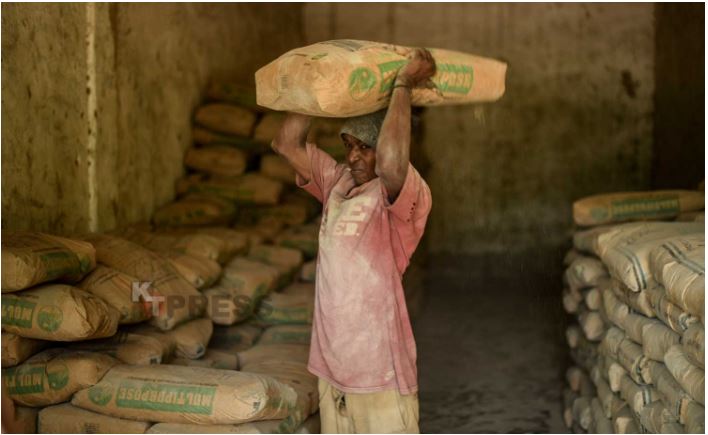
Cement supply has been problematic since May 2018
Between April and August this year, Rwanda’s construction sector experienced a severe threat. The supply of cement – the main ingredient in construction, went scarce on the local market.
At different construction sites, activities were halted. At some point, workers were sent back home.
KT Press conducted a survey then, and discovered that cement had really become scarce, while prices for the limited quantity on the market were exorbitantly high.
Apart from high prices on the retail market for Cimerwa products – Rwanda’s sole producer, even those for imported cement remained high for retail consumers.
Initially, the price for a bag of Cimerwa cement and other imported cement ranged between Rwf8500 and Rwf9000.
In May this year, Bheki Mthembu, Chief Executive Officer of PPC – Cimerwa told KT Press that ‘fake’ technology that cost the country a whopping $3. 3million to revamp the plant caused massive low production of the local cement hence affecting prices.
Seven months later, on Monday, December 10, 2018, Mthembu told KT Press the company has rejuvenated its production capacity and cement is back on the market.
“The production has gone back to normal and we have enough cement that satisfies the local market,” Mthembu told KT Press.
He, however, could not readily announce the current production volumes.
Cimerwa has invested $170 million in a modern dry-processing plant and expanded its market in the Central African region especially in Burundi and DR Congo – which are closer to the plant location in Rusizi district.
Since 2015, Cimerwa has set targets of maximizing its cement production from 100, 000 tons to 600, 000 tons annually representing a 500% increase to meet the national demand currently at 30%.
In May last year, during the cement crisis, a bag of Cimerwa, Hima, Simba and Twiga brands were sold at Rwf11, 000 ($12), Rwf10, 500 in the capital Kigali. In the country side, the prices would go as high as Rwf14, 000.
It was reported that the issue had prompted wholesalers to hoard products – causing disturbing prices on the retail market.
Apparently, the hoarding period has elapsed.
Albert Ndemeye, a distributor of cement speaking to KT Press late last week said that cement prices have gone down to normal.
In fact, he said, “The issue we have is to mobilise those who had put construction on hold to resume operations and buy from us. Construction had been stopped at different buildings. People should come back,” Ndemeye told KT Press.
For instance, he added, “The price for premium Twiga cement costs Rwf9100. This had previously shot up to Rwf15000. This is a similar range for Cimerwa, Hima and other brands on the market,” Ndemeye told KT Press.
Ndemeye confirmed to KT Press that during cement crisis, “Traders especially retailers of cement had enjoyed the privilege of cement scarcity and hiked prices the way they wanted. The situation has returned to normalcy,” Ndemeye told KT Press.
In Muhanga district, KT Press discovered that the price for Cimerwa and Hima cements is Rwf8700 a bag, while in Musanze district, Northern Rwanda, prices range between Rwf8600 and Rwf9000.

